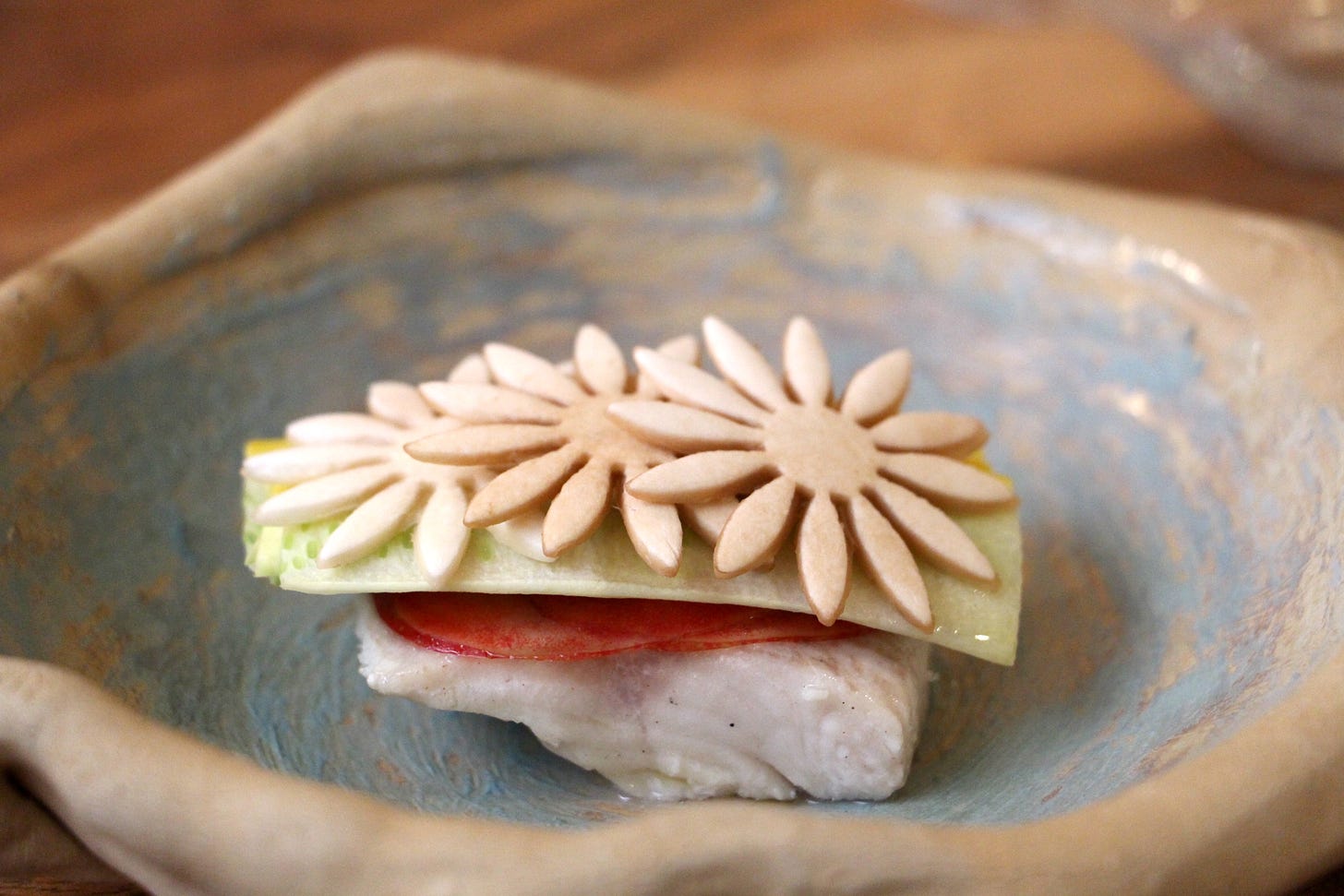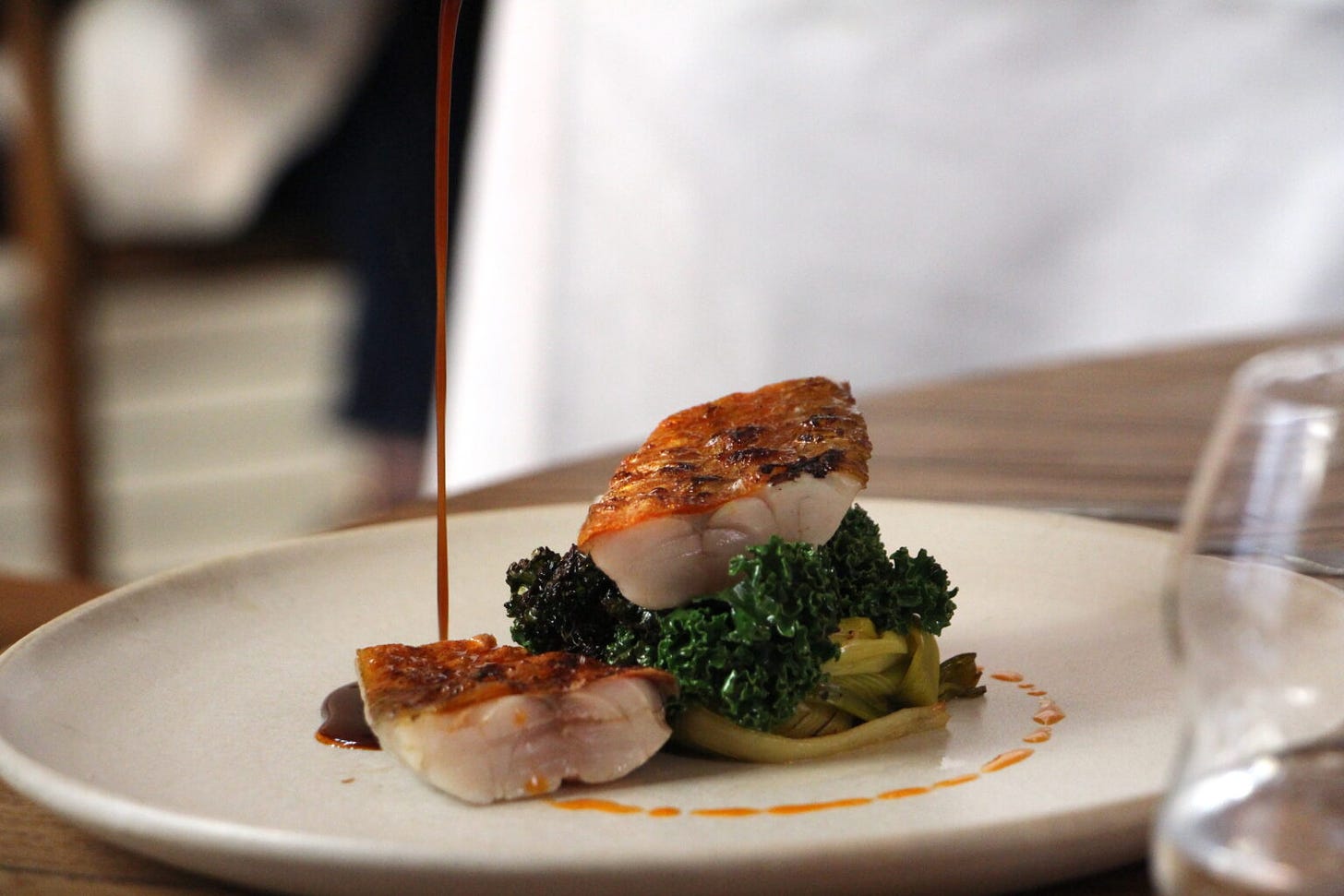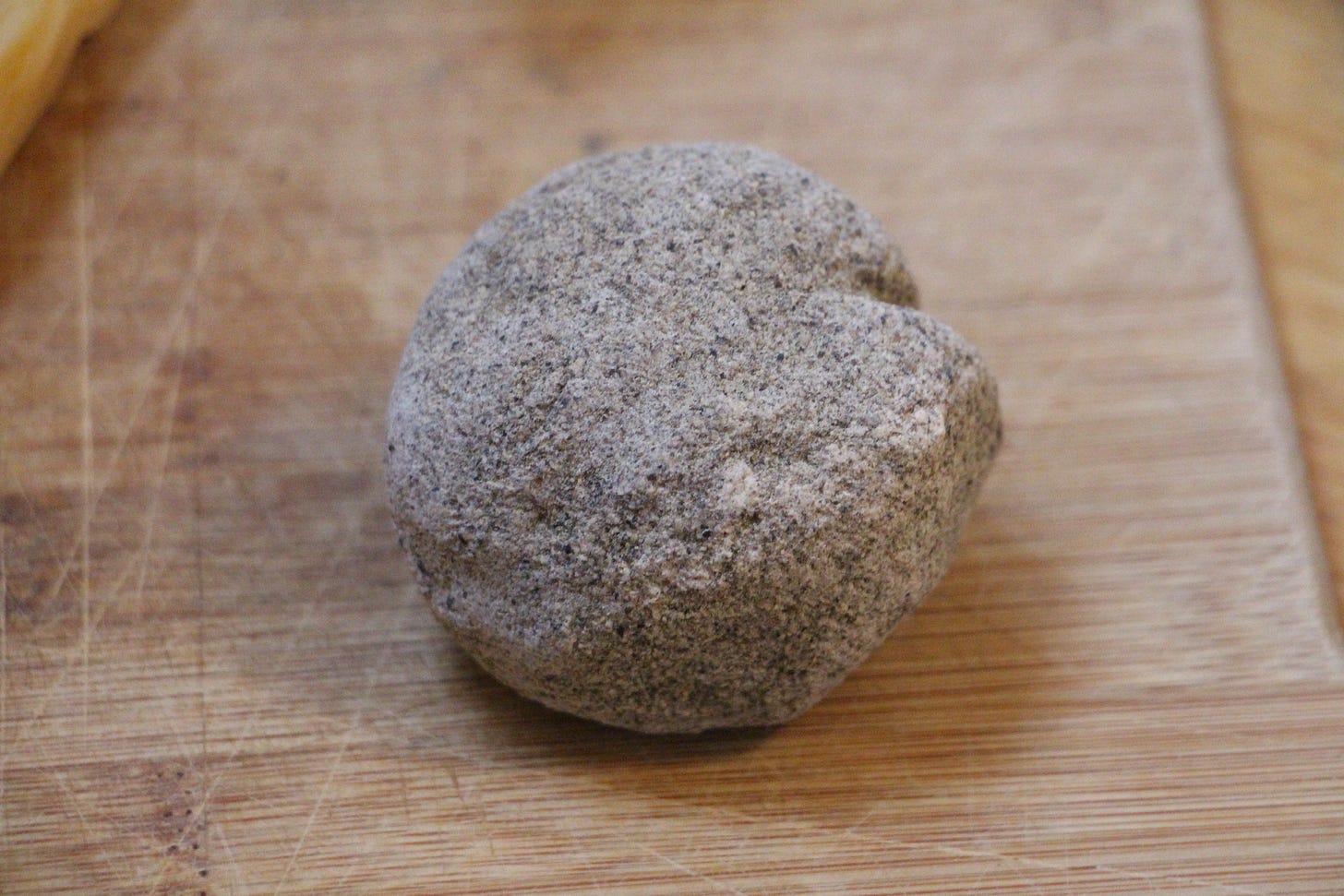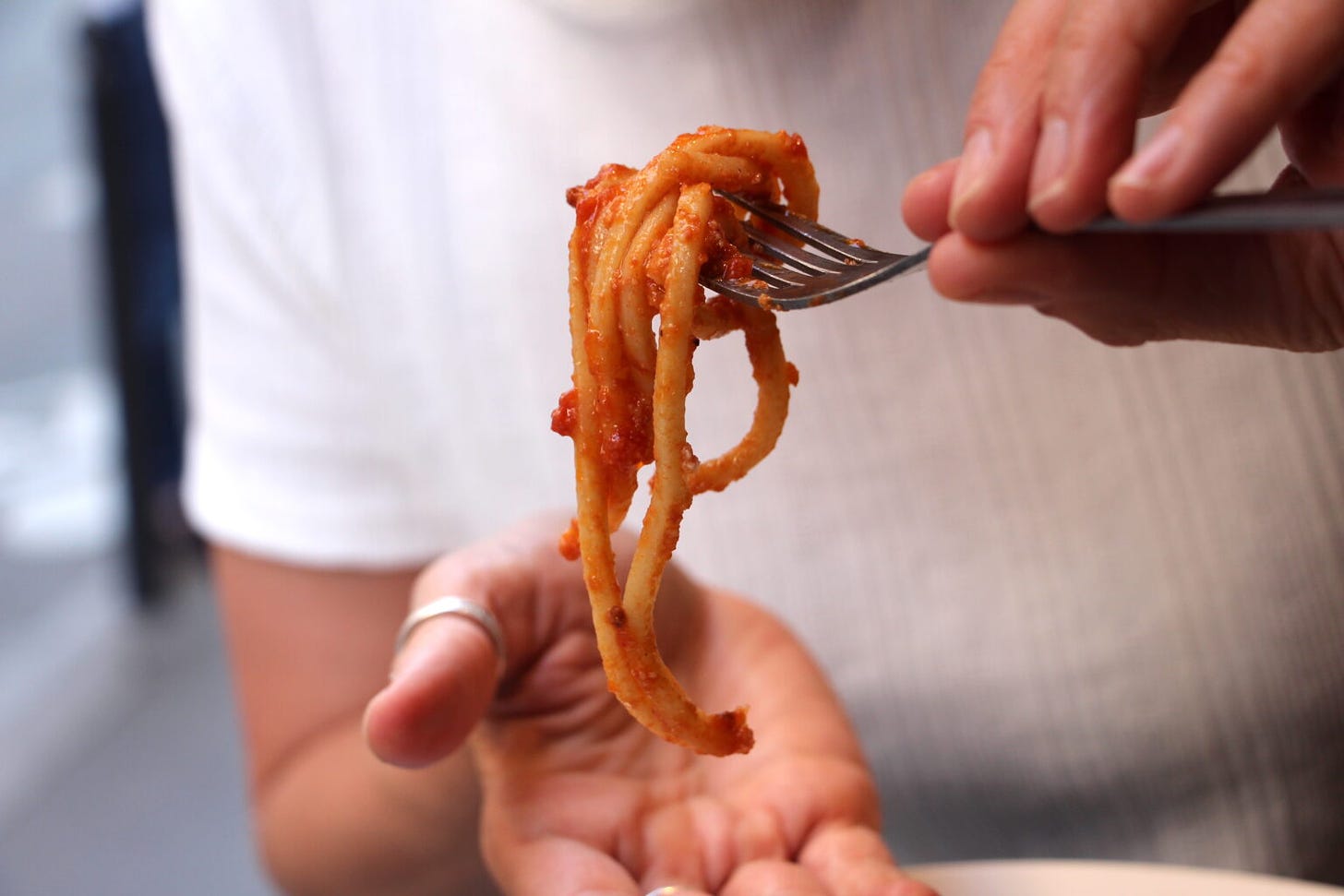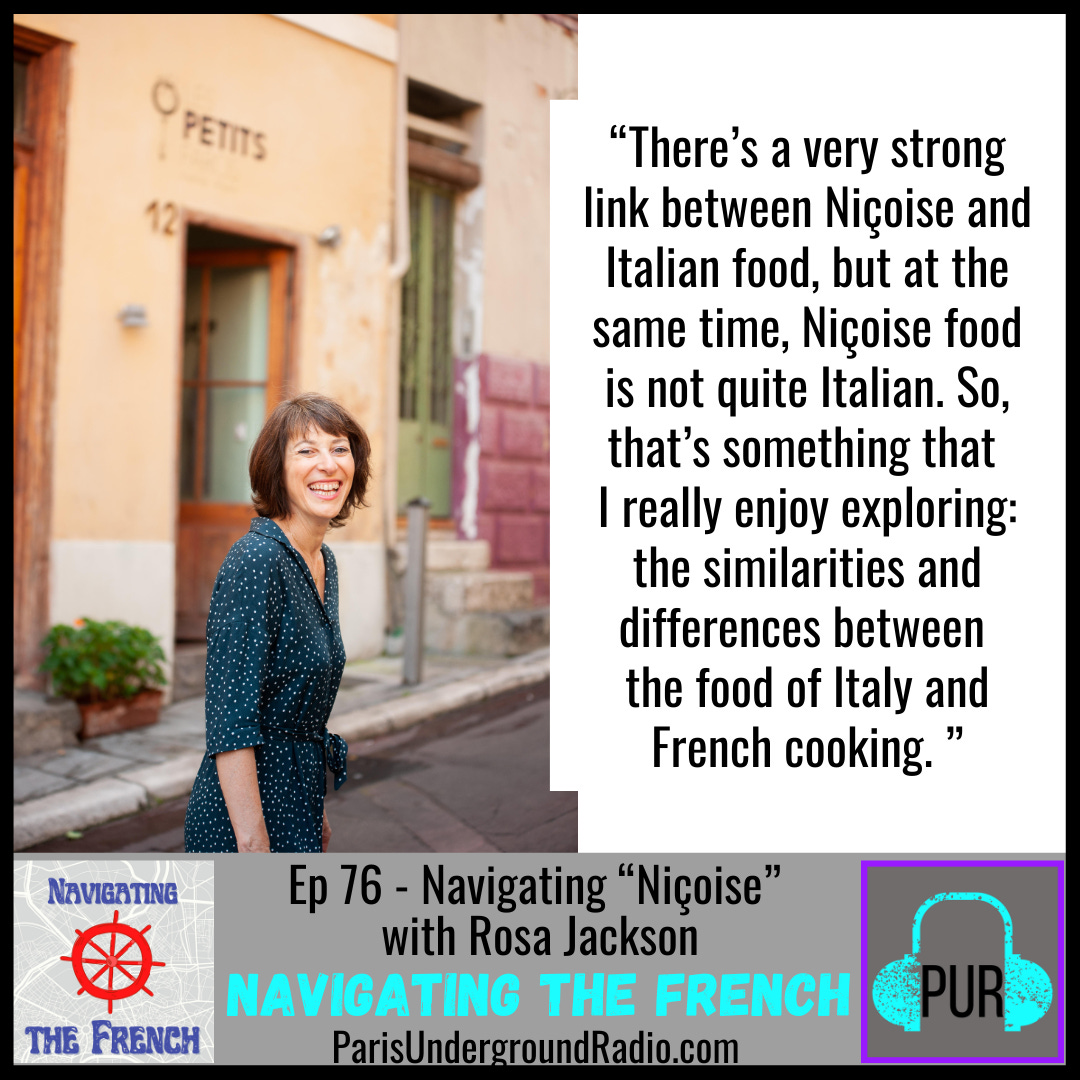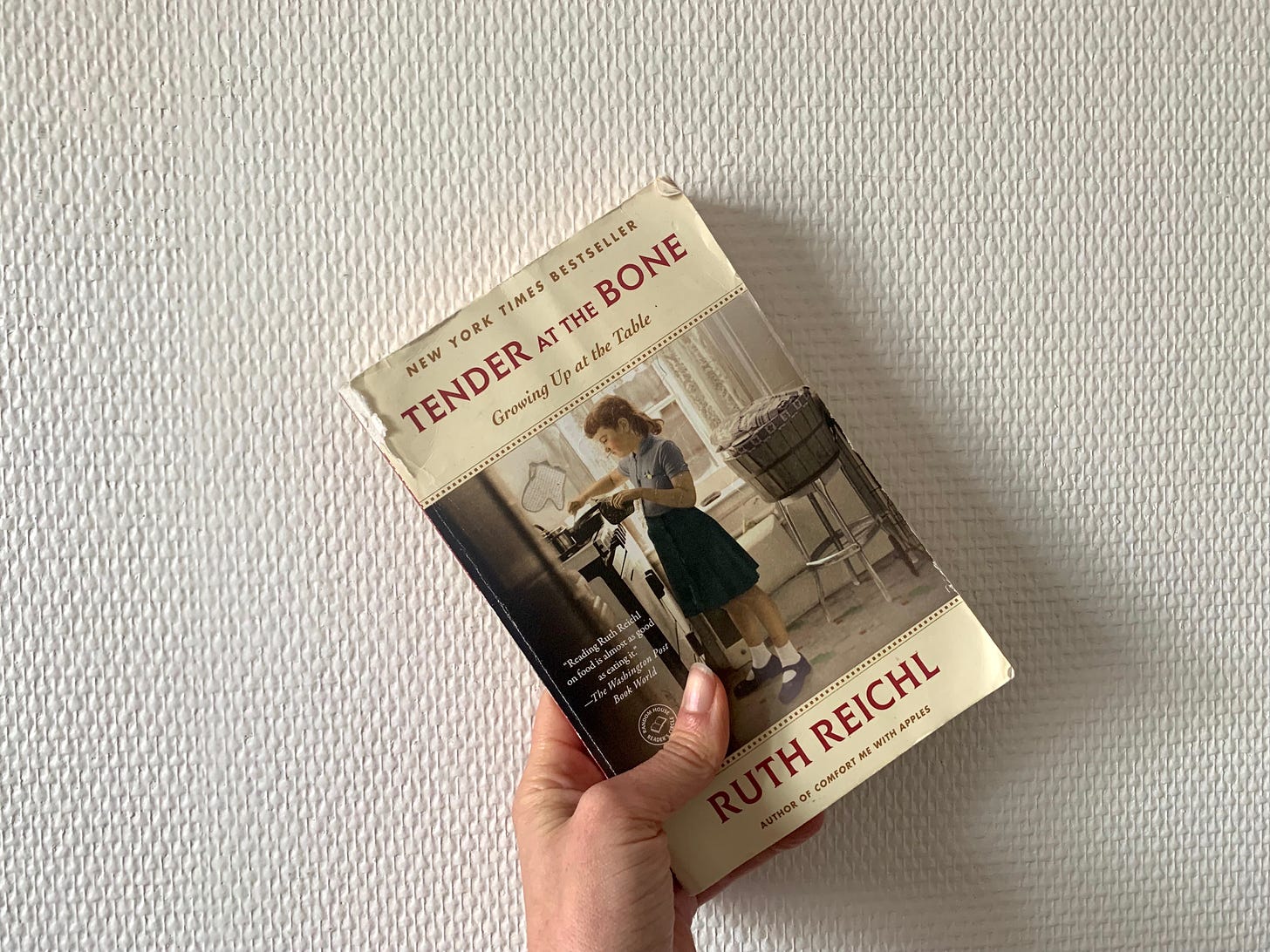If you are as Very Online as I am, and your algorithm is just right, you might have encountered this linguistic oddity:
The French language does indeed throw some crazy curveballs, and while most like to linger over the fact that to say “ninety-seven,” the French say four-twenty-ten-seven, or even the fact that saying “a ripe blackberry murmurs at the wall” makes you sound like a skipping record, I’ve got a soft spot for this unwieldy phrase, especially since encountering a version of it in the wild recently. While interviewing Chef Maxime Bouttier for a BBC piece on how restaurants actually get a Michelin star, he threw out the following:
“C’était ça, un restaurant étoilé. C’était pas se dire « qu’est-ce que c’est bon ! » « C’était se dire, qu’est-ce que c’est ? »”
The quote didn't make it into the final piece, in large part because I couldn't translate the discrepancy he was sketching out quite as beautifully and succinctly. But seeing as this is my Substack, and I have all the space I want, I’m going to try.
For context, Bouttier was looking to break down the evolution of what a “starrable” plate has looked like in a French restaurant over the years. When he first started out, about 15 years ago, he told me, a one-star-worthy dish was above all “a demonstration of technicity.”
“It was making triangles, squares, diamonds,” he said. “You didn't even recognize the original ingredient. You’d get a lobster in a sphere… I mean I’m exaggerating, but you didn't know what it was.”
And that’s where he threw in that weirdly beautiful linguistic cartwheel of a sentence:
“It wasn’t about saying, ‘Oh, how good this is!’ but rather ‘What is this?’”
These days, he went on to imply, the core ingredient has become far more recognizable, on Michelin-starred plates, thanks to an ever-increasing focus on producers and terroir. The role of a great chef has become, as Allison Zinder told me for the same article, to sublimer an ingredient – to render it sublime. To bring out the best of it, rather than to distract from it, detract from it, or somehow disguise it.
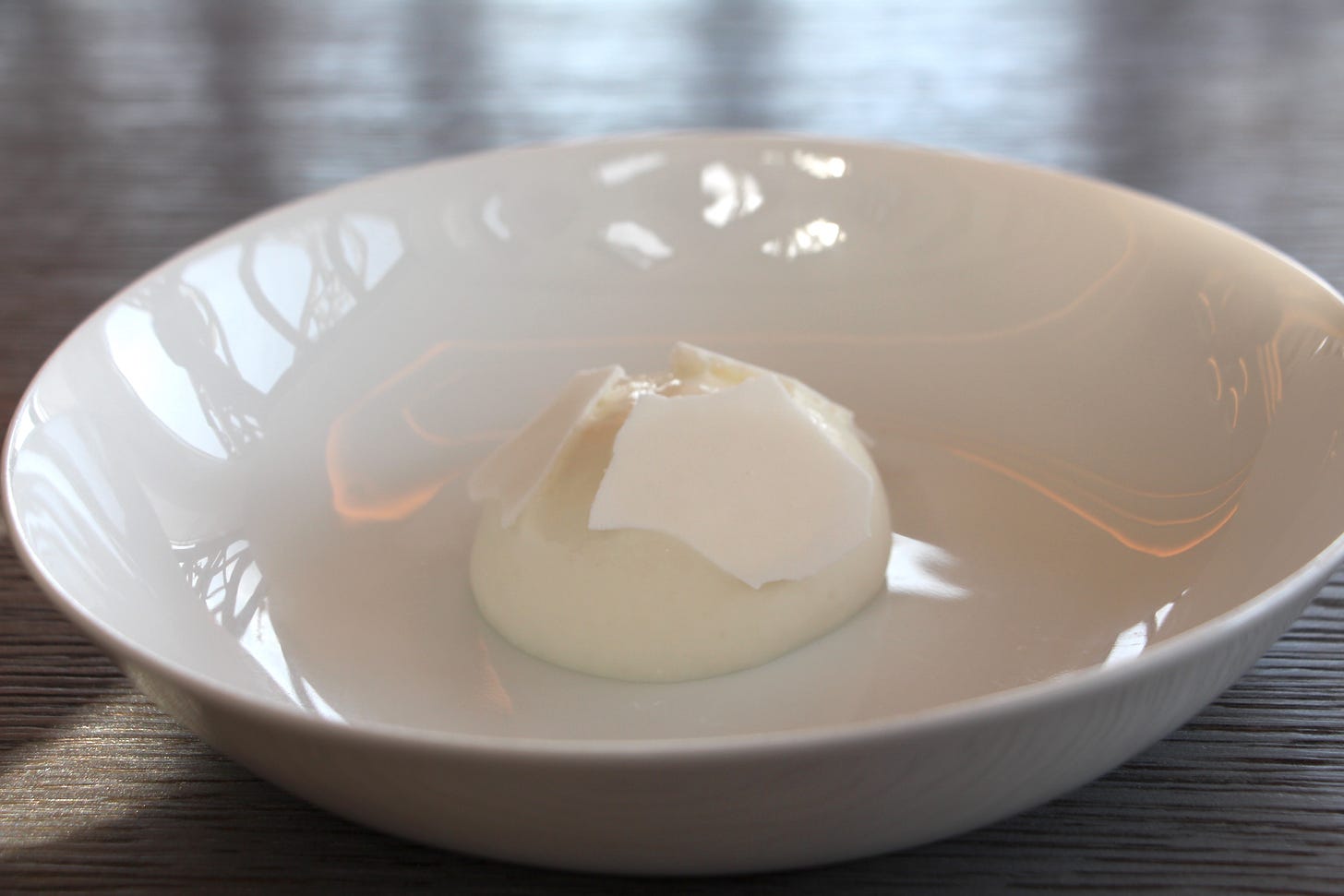
But while there’s definitely been some paring back of the overwrought bells and whistles that once defined Michelin-starred dishes, there’s still something about fine dining that seeks to nudge food out of its core role as pure nourishment, transforming it into art. To wit, the pleasure I got from plunging my spoon into a pure white dome of coconut mousse to reveal the orange-passionfruit sorbet within at le Jules Verne is completely different from the pleasure of licking a rivulet of gelato dripping down my forearm as it melted under the June sun. The delight of uniting a morsel of dry-aged mullet, charred kale, soft leek, and thick bouillabaisse sauce enriched with mullet liver to form the perfect bite at Bouttier’s Géosmine was so wholly distinct from the delight I got, this weekend in Paziols, from sipping rich pot au feu broth thickened with vermicelles as an appetizer before digging into the fork-tender meat, carrot, and leek left behind as a main.
I’m not saying that one is more worthy than the other. It’s just that they feed different hungers. One is intellectual, almost artistic. And the other is a more primal hunger, nourishment for nourishment’s sake.
Cheese of the Week
In the leadup to Halloween, I thought it would be apt to profile a slightly scary-looking cheese my brother’s girlfriend bestowed upon me when she visited a few months ago. Belper Knolle – also known as Boule de Belp – (I very honestly cannot decide which name I prefer...) is a Swiss cheese made with raw cow's milk and seasoned with Himalayan salt and garlic before being rolled in pepper and cellar-aged to perfection. Even months later, the hard cheese retains a lovely moisture and is particularly delicious grated over pasta in lieu of Parmesan.
To discover more of my favorite cheeses, be sure to follow me on Instagram @emily_in_france, subscribe to my YouTube channel, and tune into the Terroir Podcast, where Caroline Conner and I delve into France's cheese, wine, and more one region at a time.
What I’m Eating
Disclosure: I was a guest of the property for this meal.
The exquisite amatriciana and very reasonable prices would be reason enough to recommend Sugo, but the genial service and cozy dining room push it over the edge. Plus, with great vegetarian options – and service every day (lunch only on Sundays), it’s the kind of go-to I’m sure I’ll be recommending and returning to time and again. More on the blog.
Where I’m Going
1. To Julien Dechenaud's chocolate shop, to discover the new Christmas collection.
2. To Cyril Lignac’s chocolaterie, to see if the hot chocolate is up to snuff.
3. To Avallon, Burgundy, to celebrate the wedding of two of my favorite people.
What I'm Writing
1. Ruba Khoury’s Palestinian heritage, childhood in Dubai, and Michelin-starred career inspire her ideal day of dining in Paris. For Bonjour Paris.
2. New research reveals pesticides may be as bad as smoking when it comes to cancer risk. For Organic Authority.
3. From the archives: Terroir is essential to the French conception of food, linking everything from wine, cheese and meat to its place of origin. But legend has it that terroir had a bit of help from good old-fashioned spite when the French created mimolette, with its distinctive orange color and strangely lunar surface. For USA Today.
What I'm Saying
There are as many cooks as there are recipes for salade niçoise – and very few of them contain potatoes. This is just one of many paradoxes I’m exploring with Rosa Jackson, the owner of Les Petits Farçis cooking school in Nice, as we navigate niçoise on Navigating the French.
FAQs
With the goal of bringing you the content you crave, I've solicited your help. What questions can I answer for you? Drop them into the newsletter chat, and I’ll answer as many as I can!
This week’s question comes on the heels of last week’s newsletter delving into five things about dining in France that might come as a surprise. Long-time reader (and real-life friend) Emily asks:
Do you know where the US custom of having cheese first comes from? In the UK we switch the dessert and cheese so you finish with cheese, but as with the French, a cheeseboard starter would be really odd in the UK.
I must admit this one stumped me at first – and I was glad! I love when questions from readers or guests on my food tours send me down a research path.
First, I wanted to figure out why the French and Brits serve cheese close to the end of the meal. I stumbled upon the assertion on Reddit by Victoria Dennis that in the Middle Ages, people believed that cheese “closed the stomach” at the end of the meal, permitting better digestion. I delved a bit deeper to discover that this idea was far older than medieval. Turns out we have Pliny the Elder to thank for the theory, and while it doesn't quite hold water, cheese does stop you from feeling hungry again thanks to its high fat content.
As for the difference between the French approach and the British one, there are a few factors at play. I recalled from speaking with culinary historian Patrick Rambourg for a Whetstone story about the changing structure of French meals that the French are fairly wedded to ending the meal with something sweet. “I think we have a hard time, in this country, just having a main,” he mused. “I think we pretty much always finish with something sweet. A yogurt, a fruit, a cake if we want. But there’s always this moment that closes our meal, in France.”
In the UK, on the flip side, cheese is served after dessert, which most sources I've found say has to do with long-standing post-meal etiquette, “the men remaining at the table for port and cigars whilst the women withdrew to the (with)drawing room. Cheese was seen as a good accompaniment for the port etc. to keep the men going.” (Personally, I'd want to stick with the men. Wherever the Stilton goes, there go I.)
So how did we end up with cheese as an appetizer in the U.S.? To answer this question, the Food Historian was a very helpful source. While early Americans served cheese courses towards the end of the meal, like Europeans, in the 1910s, the rising trend of the cocktail party saw cheese arrive at the beginning of the meal in the form of canapés. The '40s fad of the smorgasbord – a predecessor to today's charcuterie board obsession – cemented the cheese's early place in the American entertaining lexicon, and cheese boards have been first courses in the U.S. ever since.
Not to rail on my own land, but I’m not a fan of the cheese-first approach. While I was in Paziols this past week, a fellow cheese lover, septuagenarian French person, and dear friend of mine bemoaned a recent meal she’d been served with cheese as the pièce de résistance. “When I eat cheese, it’s par gourmandise,” she told me. “I'm no longer hungry.”
And I kind of agree. Ultimately, to my mind, something so rich really belongs at the end of the meal, so you can savor one or two pieces rather than be tempted to quell true hunger with cheese and end up over-doing it. (I say this as someone who was once defeated by a cheese. But that’s another story for another day.)
What I'm Reading
1. I’m not sure why it took me so long to read Ruth Reichl’s Tender at the Bone, but I’m so glad a friend foisted it on me recently. This book is a true ode to food, wending its way through an adventurous life studded with characters stranger than fiction. It is pure joy to read, and I aptly devoured it.
2. This intro to a Baudelaire poem I had no idea about. In A Good Vintage.
3. This inspiring (and terrifying) deep-dive into India’s living root bridges. In Going.
A bientôt !



